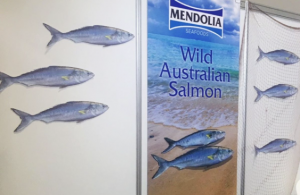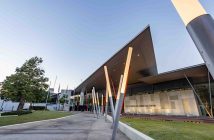 West Australians can celebrate the abundance of Australian salmon which grace our shores for a few short weeks each year between March and May. The species is revered across both commercial and recreational sectors, and our community is fortunate that the well managed fishery stocks are healthy, providing a highly sustainable catch to meet both community and commercial aspirations. Prudent management of this resource by our Government will ensure abundant harvests of this iconic resource for many future generations of West Australians.
West Australians can celebrate the abundance of Australian salmon which grace our shores for a few short weeks each year between March and May. The species is revered across both commercial and recreational sectors, and our community is fortunate that the well managed fishery stocks are healthy, providing a highly sustainable catch to meet both community and commercial aspirations. Prudent management of this resource by our Government will ensure abundant harvests of this iconic resource for many future generations of West Australians.
The “salmon run” along the South and South West coasts of WA is typically around six weeks in duration, with highly variable patterns which bring the salmon close to shore in some years and further offshore in others. Traditionally commercial and recreational fishers target the schools which move in close to beaches, using lines or nets. The variability of the migration pattern means fishers need to be flexible and opportunistic for the best chance of meeting their respective needs.
Commercial fishers have limited flexibility in their ability to fish across the South Coast, as they are limited to fishing certain beaches. This year, of the hundreds of beaches across the coast, salmon are being fished by commercial salmon fishers on Parry’s Beach, Betty’s Beach and Cheyne’s Beach only.
Historically salmon has been a key driver in the state’s Southern fishing economy, with canneries processing up to 4000 tonnes per year, with high employment rates and international distribution. A single school can create up to twenty jobs in regional centres and create a value of $200,000 when it reaches retail shelves. This has a significant impact for WA’s regional economies. Cannery closures have seen the commercial catch dwindle in recent decades, with a majority of the catch providing a safe and sustainable food for zoo’s across Australia, a bait source for lobster fishers and a premium ingredient in specialty pet foods.
The future looks very different – with Australian salmon emerging as a popular, healthy and well-priced product, sought after by a growing number of high profile chefs across Australia. The opportunities for high-end value-added products are rich, alongside the need for low cost, high nutrition and high-volume prepared food products for sectors such as aged care. In doing so it is important to understand that not all fish taken will meet the specification as high-grade food fish. It is an issue across primary production where “straight” bananas and imperfect apples need to still be utilised in some manner.
WA Wild Salmon
Share.



